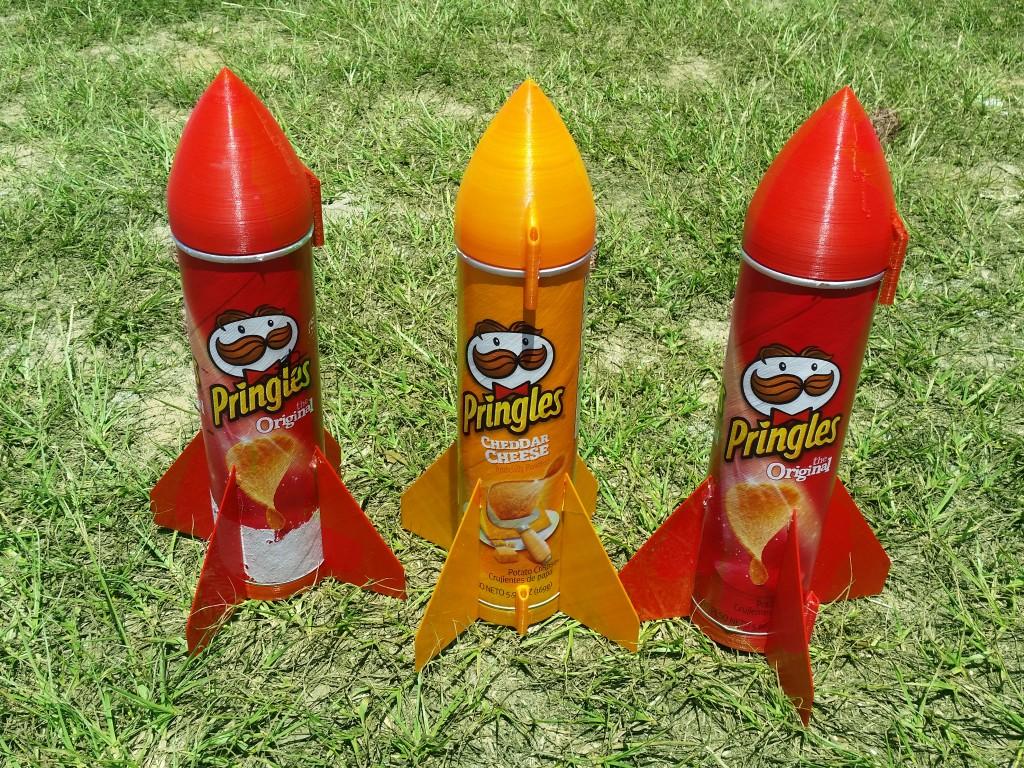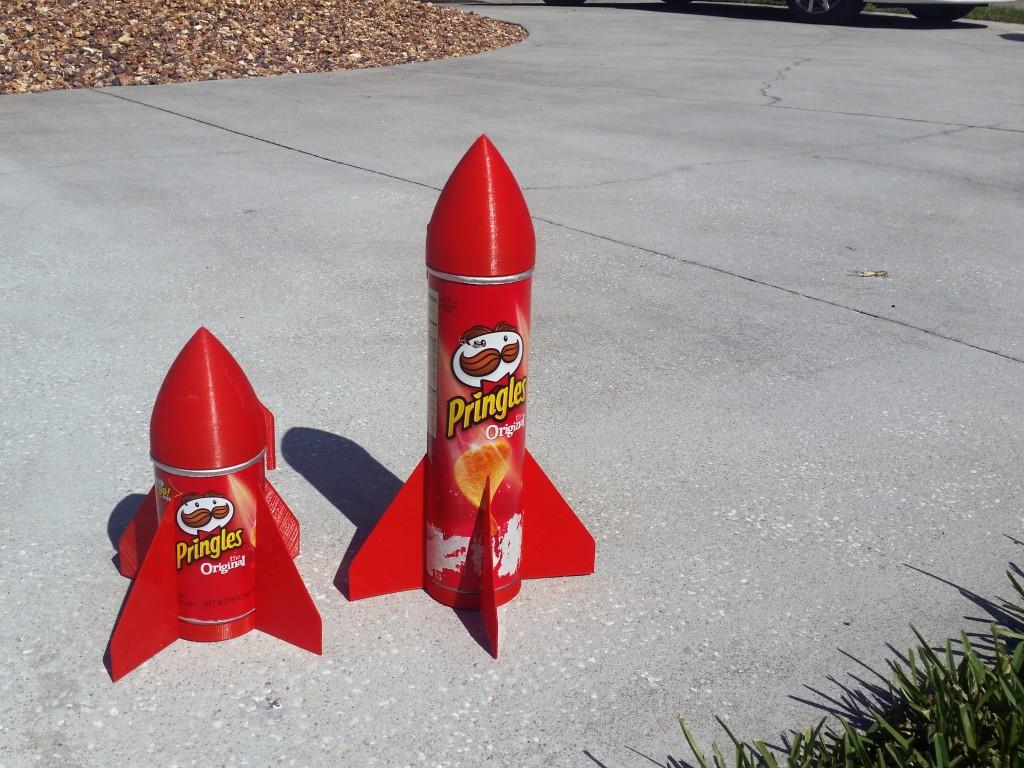 Did you ever look at an idea and say, “Wow, I wish I had thought of that”? Of course you have. Everyone has envied the creativity of others before.
Did you ever look at an idea and say, “Wow, I wish I had thought of that”? Of course you have. Everyone has envied the creativity of others before.
For one man, named Patrick Saville, though, creativity certainly isn’t something he needs to work on. Saville is a single, work-at-home dad who has converted half of his home into a 3D printing studio. In that studio, he and his partner work on a wide range of projects using three Ultimaker 2 3D printers and a Form 1+ SLA printer.
“Having a home office is a blessing and a curse,” Saville tells 3DPrint.com. “I’m able to keep all 4 printers running around the clock and keep an eye on each of the prints. However, this means getting up several times a night to switch prints or check on critical parts. Luckily, I’ve learned to sleepwalk while I check prints and swap filaments or resins. It really is a 24 hour job.”
While most of Saville’s projects are for clients who need products prototyped, at times, he does like to focus a bit more on the hobby side of things when it comes to 3D printing. Recently when he was doing some spring cleaning, he came across an old box that he had laying around. Inside it were a bunch of model rocketry parts, such as motors, nose cones, fins and launchers.
“With plenty of parts on hand, and the summer weather being great, I decided it was time to launch a rocket,” Saville tells us. “The problem was that I had no tubes. One cone was designed for a large tube, while one motor mount was designed for a small tube. A lot of rocket parts, and no way to use them without ordering tubes.”
 Like any good ‘maker’ though, Saville found a solution…. or should we say, created a solution? While going through that old box again later that evening, there was a Pringles can sitting on his desk, just minding its own business, when the proverbial light bulb went off in Saville’s head. He could use that very can of potato chips to create his own rocket (of course after eating all the chips inside).
Like any good ‘maker’ though, Saville found a solution…. or should we say, created a solution? While going through that old box again later that evening, there was a Pringles can sitting on his desk, just minding its own business, when the proverbial light bulb went off in Saville’s head. He could use that very can of potato chips to create his own rocket (of course after eating all the chips inside).
With his experience in 3D printing, Saville set out to design and 3D print parts which would ultimately turn his now empty Pringles can into a high flying rocket.
“I went about the design process in much the same way I tackle my other projects,” Saville explains. “I knew what the fixed variables were. Tube weight and dimensions, and motor weight and dimensions. And that’s it. The rest would have to be 3D printed, and that meant keeping the weight down in the design was crucial. The design was going to be geared towards FDM printing, since that’s what I use here. That meant taking into consideration average nozzle diameters for popular FDM printers. The average diameter of the popular FDM printers is .4mm, so the entire design would be based around that number.”
In order to keep the weight down as much as possible, Saville made sure that all the walls of his designs were only .8mm thick. He also needed to calculate the center of gravity and the center of pressure, but thankfully Autodesk Inventor does a very good job of doing this. After brainstorming a bit, Saville realized that a single rod guide at the base would not be enough to support the rocket, so he added another rod guide to the nose cone, something not very common within the hobby of model rocketry.
 Once all of the parts were 3D printed, the Redneck Rocket (as Saville terms it), was assembled and equipped with an Estes D motor. The rocket, which weighs a hefty 1/2 pound (227 grams), with about 2.8-3 ounces of that weight in the nose cone alone, actually can fly quite well. Saville estimates that it can reach about 300 feet before stalling out and returning to Earth via a parachute created from a garbage bag.
Once all of the parts were 3D printed, the Redneck Rocket (as Saville terms it), was assembled and equipped with an Estes D motor. The rocket, which weighs a hefty 1/2 pound (227 grams), with about 2.8-3 ounces of that weight in the nose cone alone, actually can fly quite well. Saville estimates that it can reach about 300 feet before stalling out and returning to Earth via a parachute created from a garbage bag.
“Launching was thought about in the design process, and is why a stand is included in the printable files,” Saville tells us. “You simply slide a rod (up to 1/8”) into the stand and stick the rod in the ground. We wanted to keep it as redneck as possible, so we pulled a fuse from a firework, and stuck it in the motor. Of course, more conventional ignition systems could still be used.”
For those interested in printing out these parts and assembling your own Redneck Rocket, you can download them all for free via Thingiverse.
What do you think about this unique creation? Have you tried shooting off your own 3D printed Redneck Rocket yet? Discuss in the Redneck Rocket forum thread on 3DPB.com. Check out the videos of the rocket in action below.
Subscribe to Our Email Newsletter
Stay up-to-date on all the latest news from the 3D printing industry and receive information and offers from third party vendors.
Print Services
Upload your 3D Models and get them printed quickly and efficiently.
You May Also Like
Consolidation in AM: How 2025 Is Shaping the Industry’s New Normal
The first half of 2025 has been marked by a clear shift in the additive manufacturing (AM) industry. Companies are no longer just focused on developing new tech by themselves....
Etsy Design Rule Change Reduces Selection of 3D Printed Goods
Online marketplace Etsy has implemented a rule change requiring all 3D printed goods on the site to be original designs. The update to the site’s Creativity Standards states, ¨Items produced using...
U.S. Congress Calls Out 3D Printing in Proposal for Commercial Reserve Manufacturing Network
Last week, the U.S. House of Representatives’ Appropriations Committee moved the FY 2026 defense bill forward to the House floor. Included in the legislation is a $131 million proposal for...
Transforming From Tourist to Native: Duro CEO Michael Corr Explains Why the Company Rebuilt its PLM Software on AI
In these early innings of the AI boom, many market analysts have expressed concern that AI spend has gotten too far ahead of the technology’s proven ability to deliver significant...


































